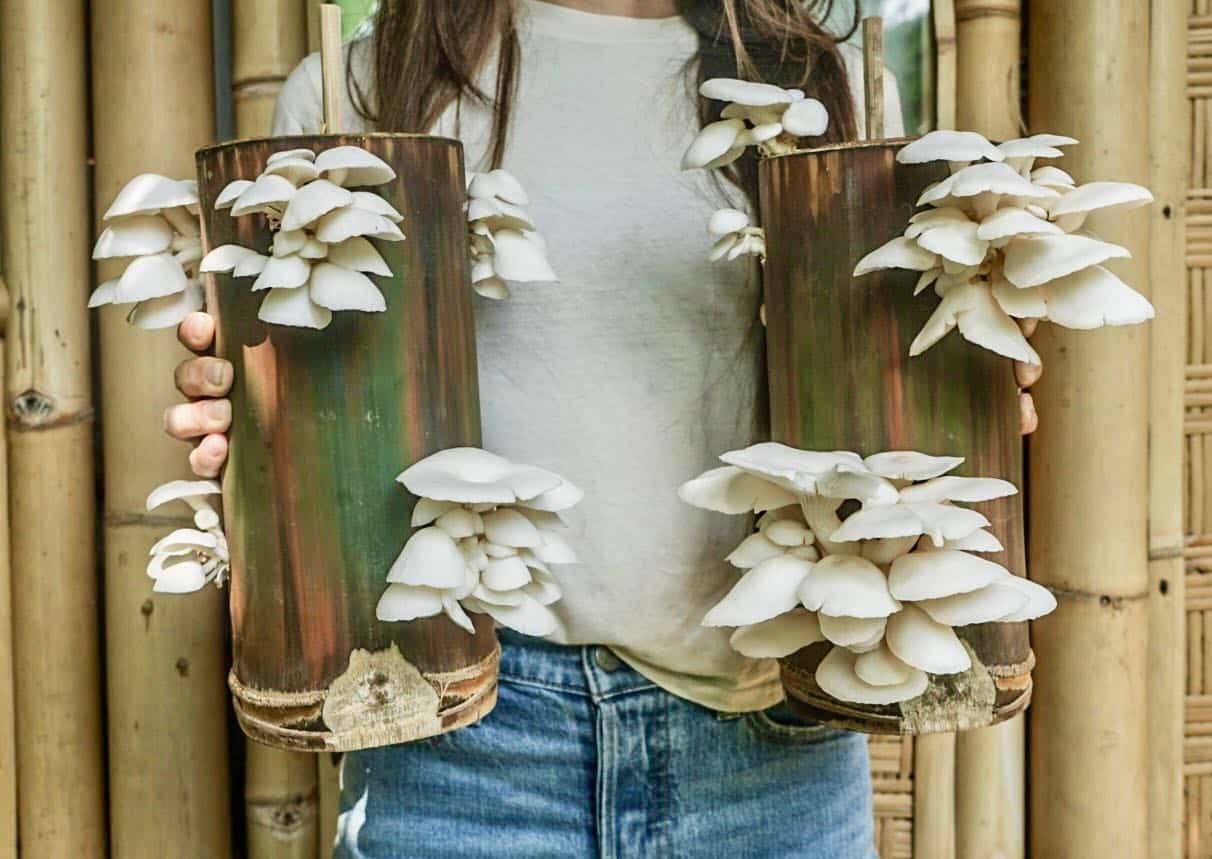
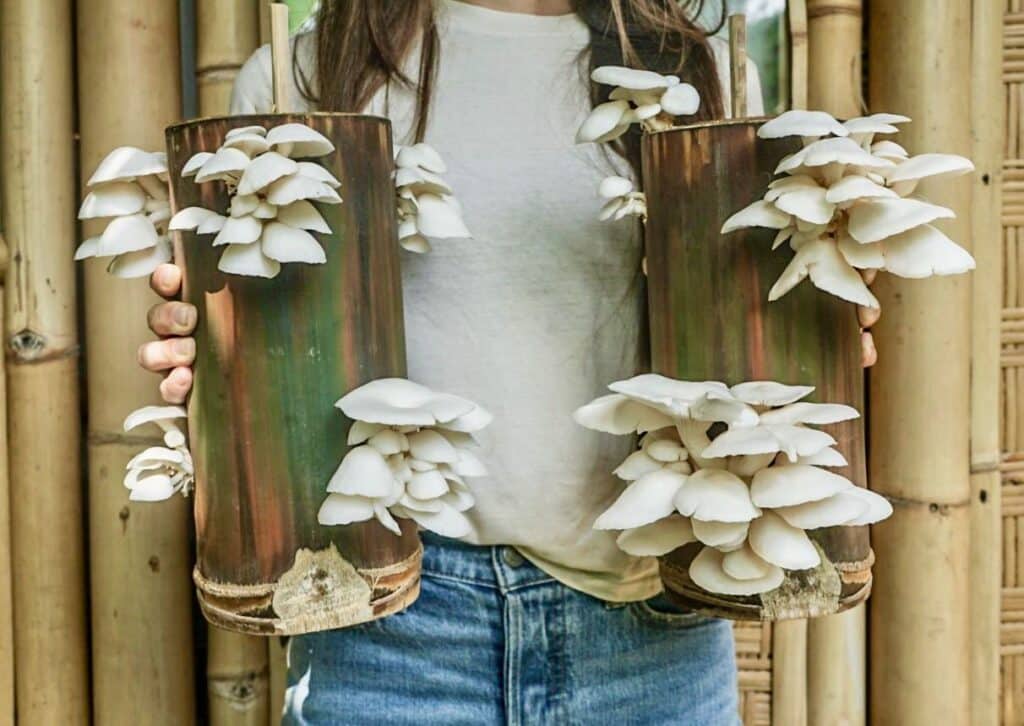
Can you grow mushrooms in bamboo? Why yes, you can. Oyster mushrooms can be grown in all kinds of containers – it just depends where you are, and the resources around you. But there’s a few things to think about, before you choose… here’s some options for low-waste mushroom cultivation…
Which containers are good to grow mushrooms in?
There’s lots and lots of different containers you can use to grow mushrooms in – they all have a few features in common though, to be suitable for fungi. A good container for growing mushrooms should:
- Hold moisture in – so the mycelium doesn’t dry out.
- Be able to be made very clean, and contained – so no other spores or mould are competing with your mushrooms.
- Be able to be made very clean, and contained – so no other spores or mould are competing with your mushrooms.
- Ideally, be low-waste, no-waste, or made from re-purposed containers.
- Needs to be available where you live, in good supply, cheaply (or free!)
So. Depending on the species of mushroom you’re growing, and where you live… this ideal container might look like – food grade plastic buckets.
Or freshly cut logs of wood, or a garden of woodchip, or empty water bottles, or feed-sacks, full of straw, or glass jars, or something else… like bamboo.
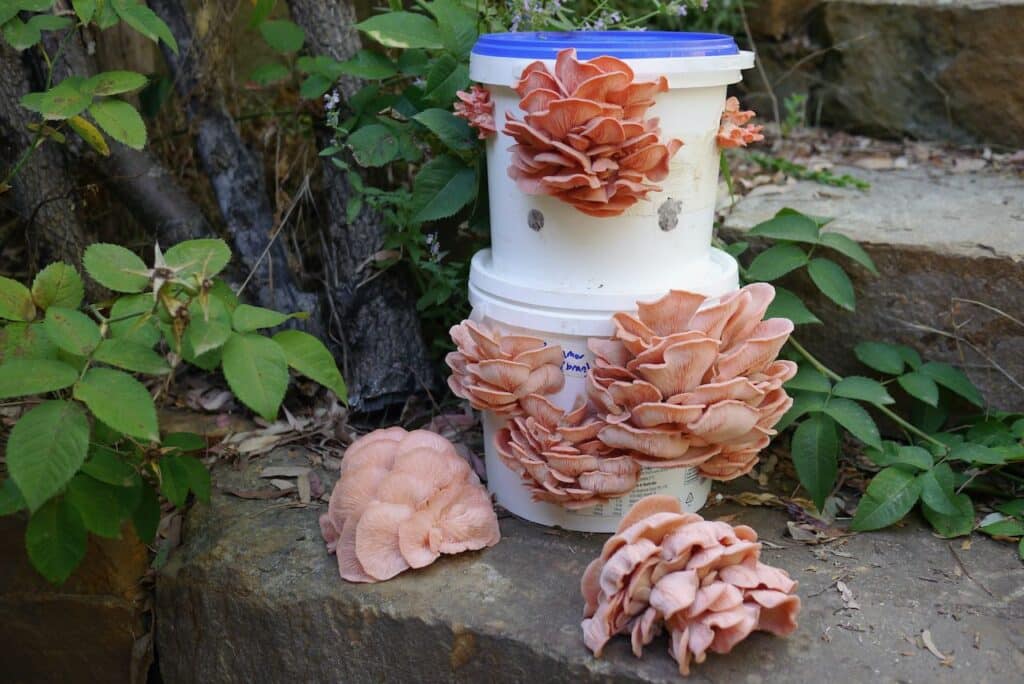
Growing Mushrooms in Plastics – the low down
A note on plastics – growing organic mushrooms in plastic might seem like a weird contradiction. What if the mushrooms eat the plastic? And even if the mycelium doesn’t break it down, could the mushrooms absorb plastic toxins? None of us want more plastic in our lives, our food, or our ecosystems. Yep, we’ve thought about this too.
After a fair bit of research, we’ve found that sturdy, recycled, food-grade buckets are an excellent option for mushroom cultivation—especially if they’re the most practical choice for where you live and what’s available to you.
Fungi are pretty amazing, and some species can break down certain plastics over time. But this process is slow, and when given a choice, mycelium will prioritise organic materials like straw or sawdust over plastic.
If the mycelium did degrade plastic over time, it’s important to recognise that this doesn’t mean it disappears without consequence. Some plastics break down into microplastics or release chemical additives, which may persist in the environment or enter the food chain.
That’s why the type of plastic matters. Food-grade polypropylene (PP) is one of the most stable and least likely to leach harmful compounds. It doesn’t break down easily, reducing the risk of contamination, especially if kept out of direct sunlight to prevent UV degradation.
So, while fungi will usually go for the meal (your carefully prepared substrate) rather than the plate (the bucket), using high-quality, food-grade plastic minimises risks. If food-grade buckets are your best option, they can be a practical and safe choice—just use them wisely and keep them in good condition.
Mycelium prefer to eat the meal, rather than the plate it’s on
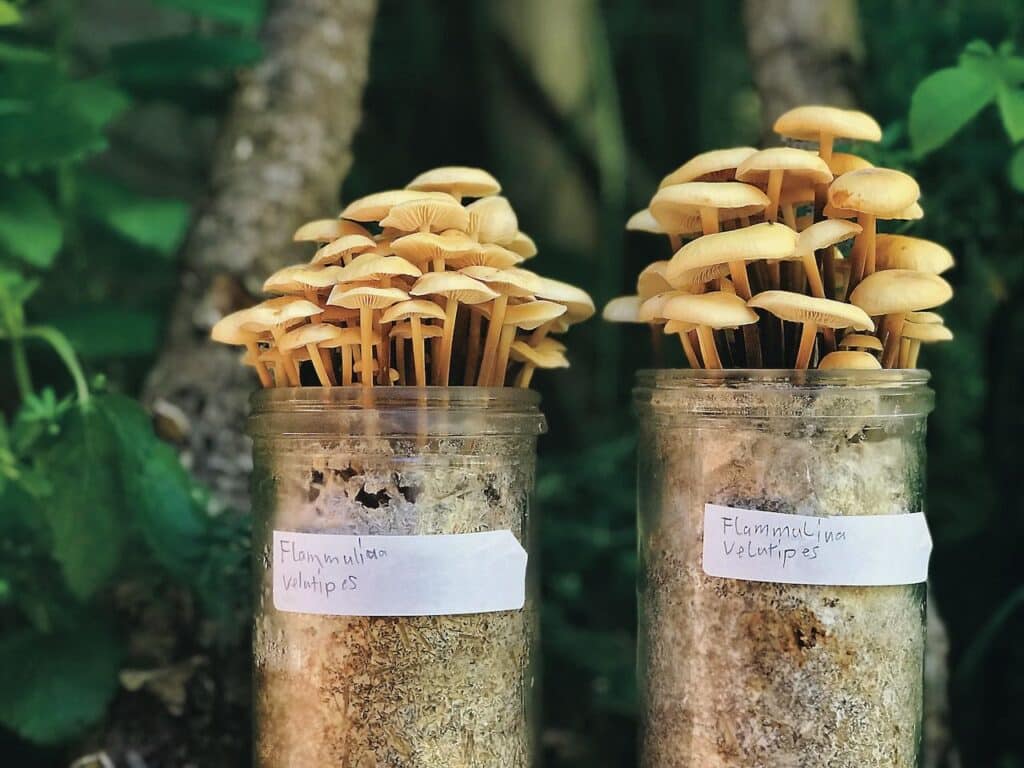

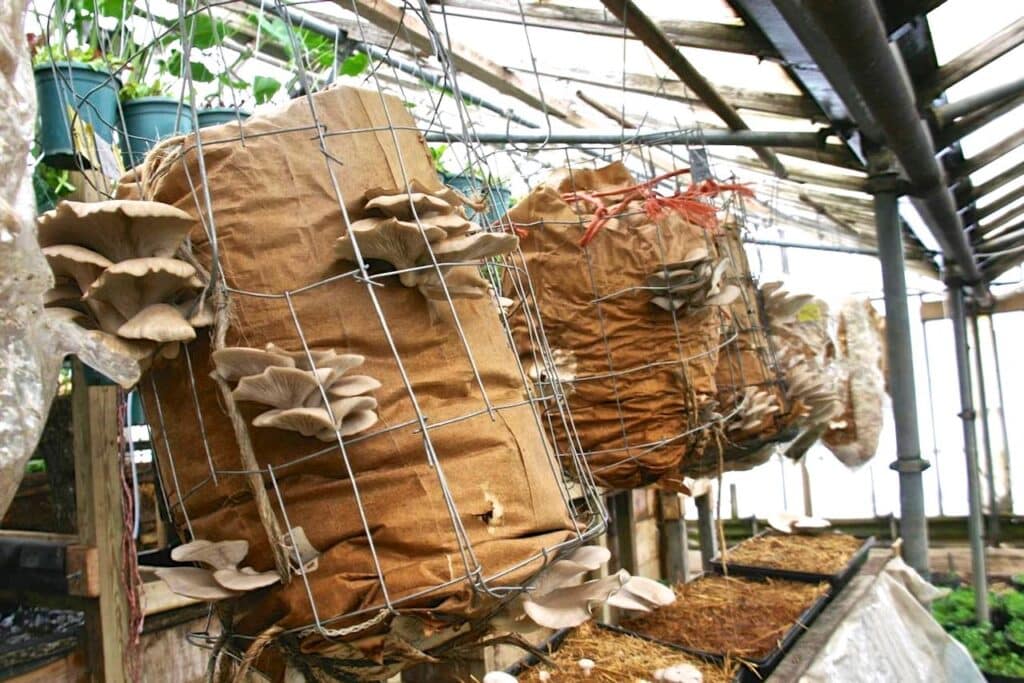
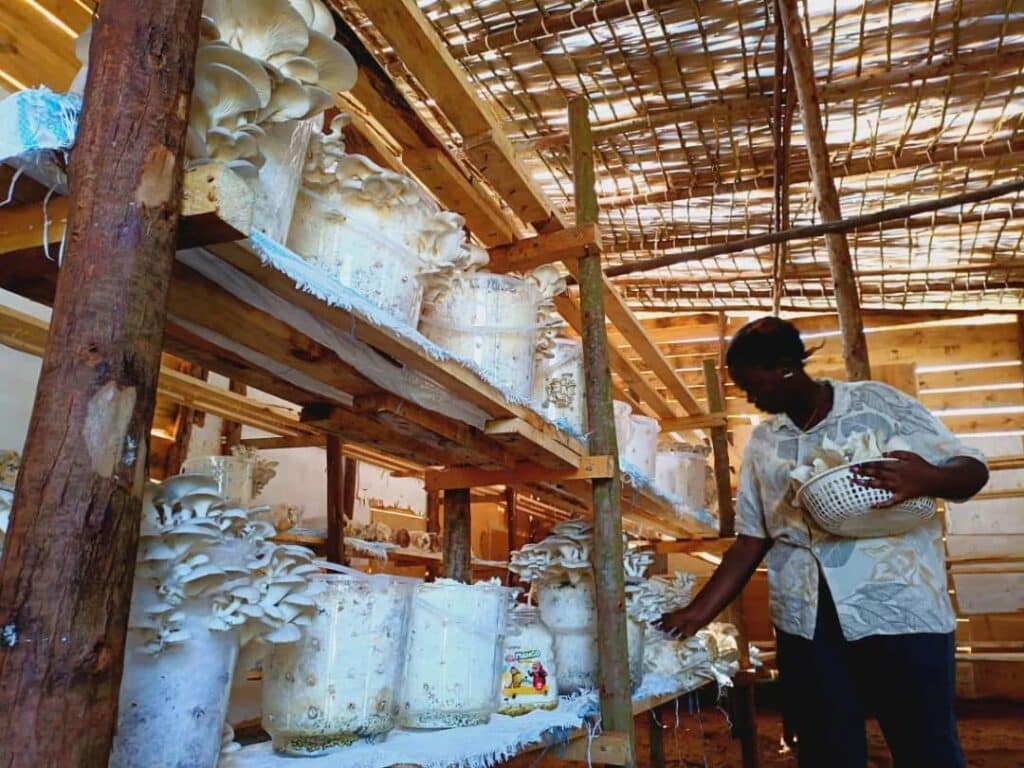
Use what you’ve got – and make it work.
The key with low-waste mushroom cultivation is looking at what resource you have around you – that are plentiful and suitable – to grow mushrooms.
In some places, food-grade buckets make the most sense. Other places might have very high humidity, and hessian bags full of straw might make the most sense.
Meanwhile in Nakivale Refugee Settlement in Uganda, where a bunch of our students live, it depends on what you can get hold of – plastic buckets, plastic water bottles, and sometimes bags make the most sense to grow mushrooms in. And things can change. So they roll with it.
Use what you’ve got. The point here is to grow nutrient-dense food and medicine, using simple waste products, wherever you live, as part of your everyday.
In terms of single-use plastic – ANY of the above options are likely to be better than buying mushrooms from a store, from a waste viewpoint – because with the store-bought option, you will almost certainly be eating mushrooms that have been grown in single-use plastic bags.
So – do your best, get creative figuring out the best options for you, and grow mushrooms with what you’ve got.
For a deeper dive, head to this guide to the whys and hows of growing mushrooms without single-use plastics.
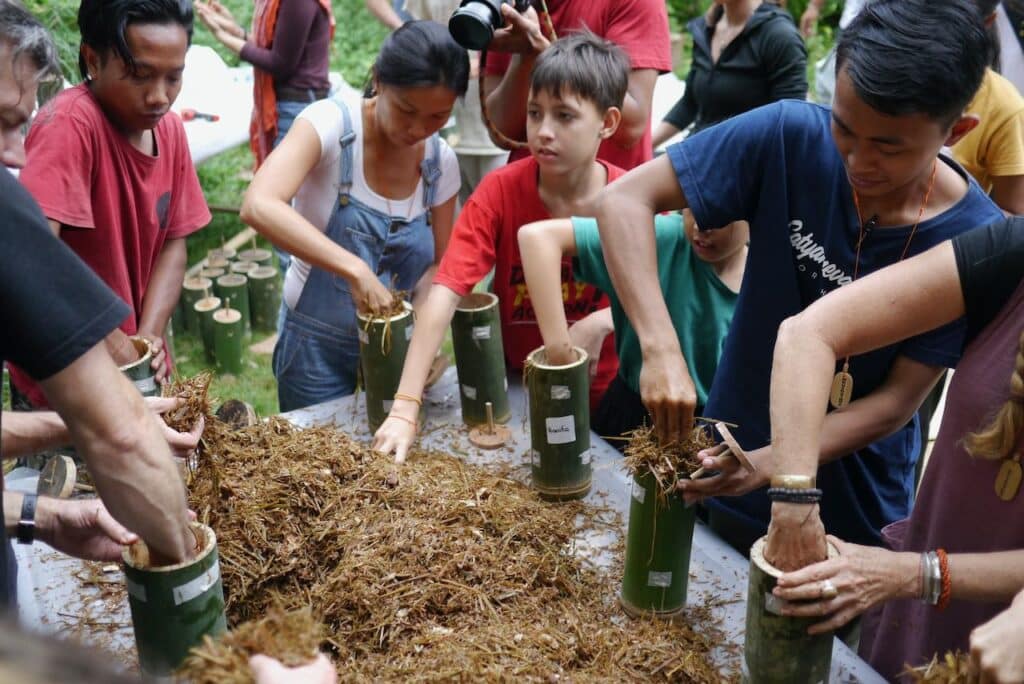
Growing Mushrooms in Bamboo – at Kul Kul Farm
A while back, we were teaching permaculture design at Kul Kul Farm in Bali, and with the help of Maria and Orin, the farm’s founders (and excellent people) – we cooked up a free workshop for locals (and students) on growing mushrooms.
Hmm – containers – what would be suitable, locally available in good supply, and either super-cheap or free?
‘Bamboo!’ Said Orin. Yessss, we answered happily. Let’s do it.
Freshly-cut giant bamboo can make a perfect container to grow oyster mushrooms in. The bamboo grows in segments, creating great little containers that can be used. It’s light, and easy to move around. And because the bamboo is freshly cut, it’s not contaminated with other spores or mould.
And…. bamboo grows fast, and is everywhere, around Kul Kul Farm. Perfect!
The process is the same(ish) for different containers
The main process of growing oyster mushrooms in containers is the same – no matter if you use buckets, bamboo, or something else. It’s the same method, as far as the mushrooms are concerned.
I’ve added our beginner’s guide below so you can get a sense of how this all works:
And then – with a bit of preparation and a lot of bamboo cutting, we all got growing mushrooms, as a crew….
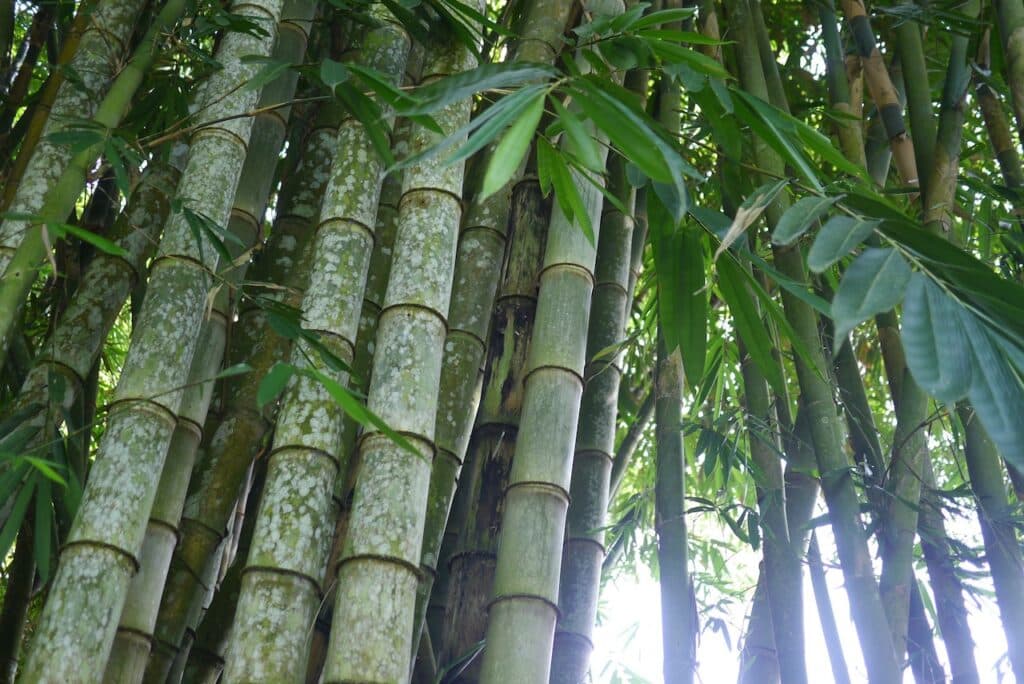
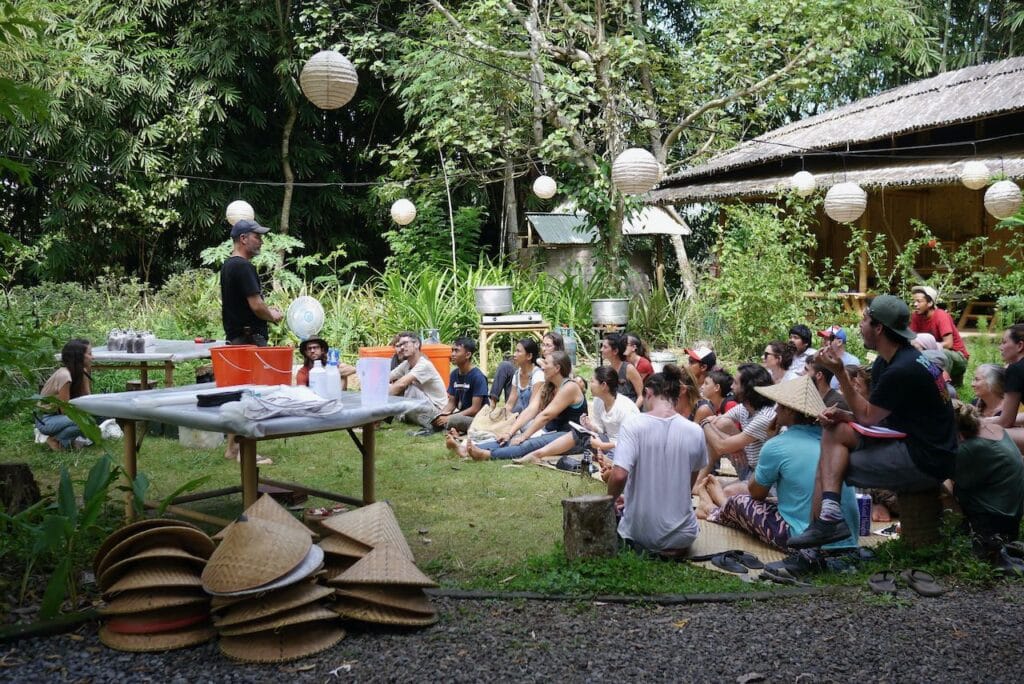
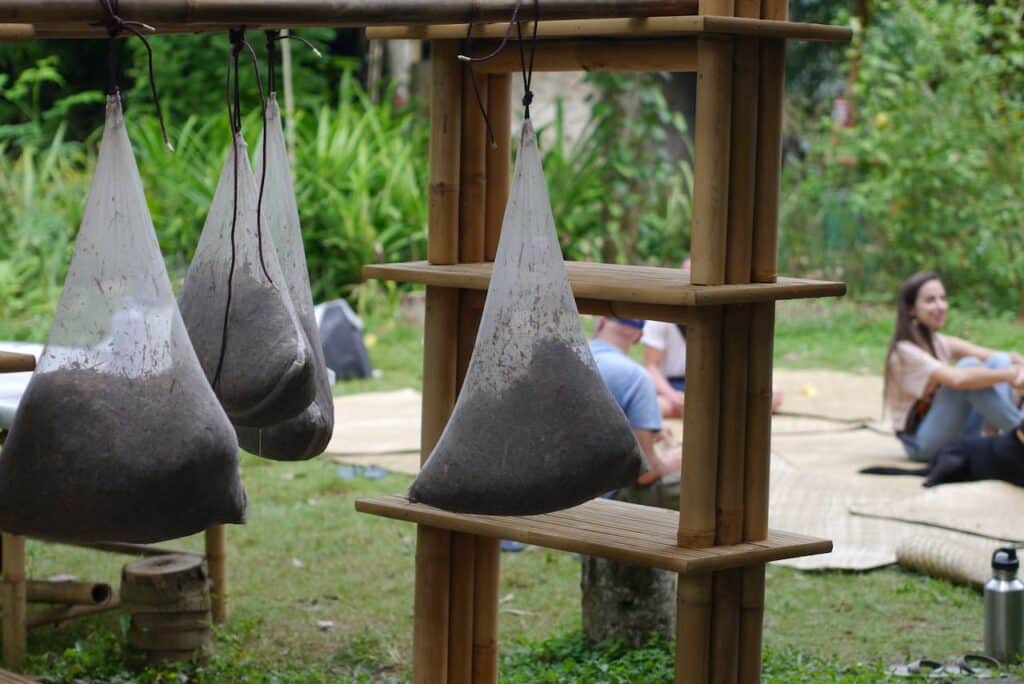
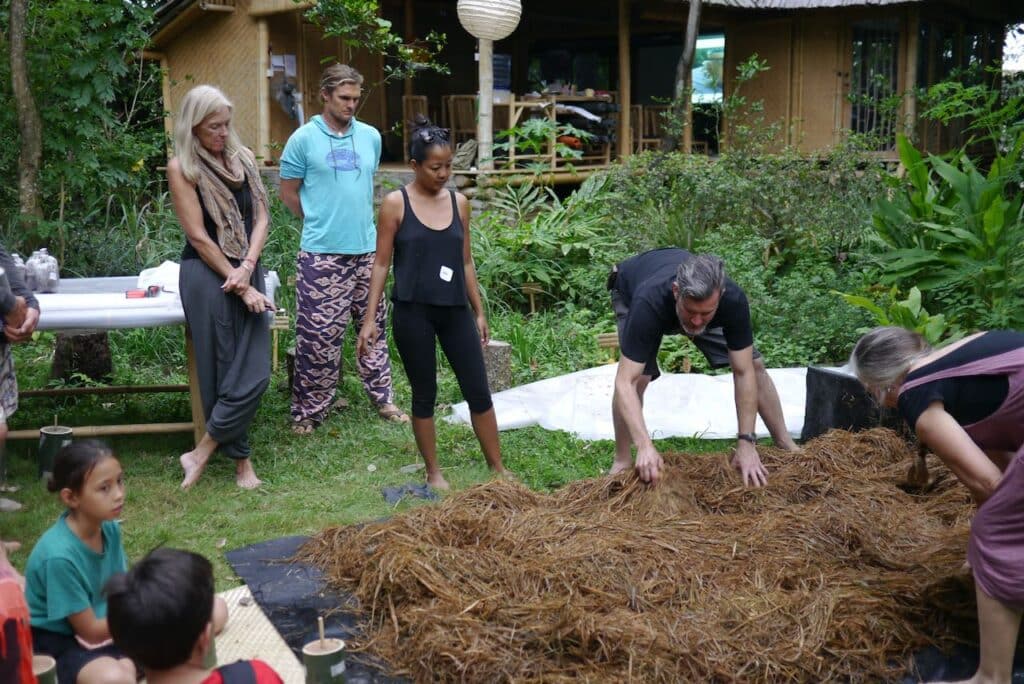
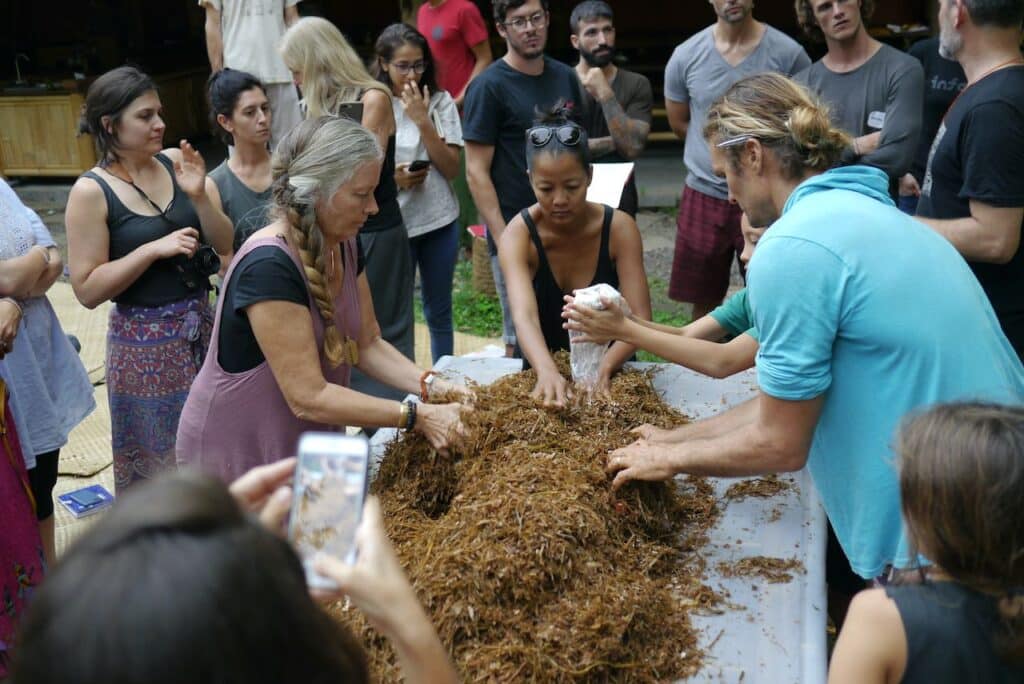
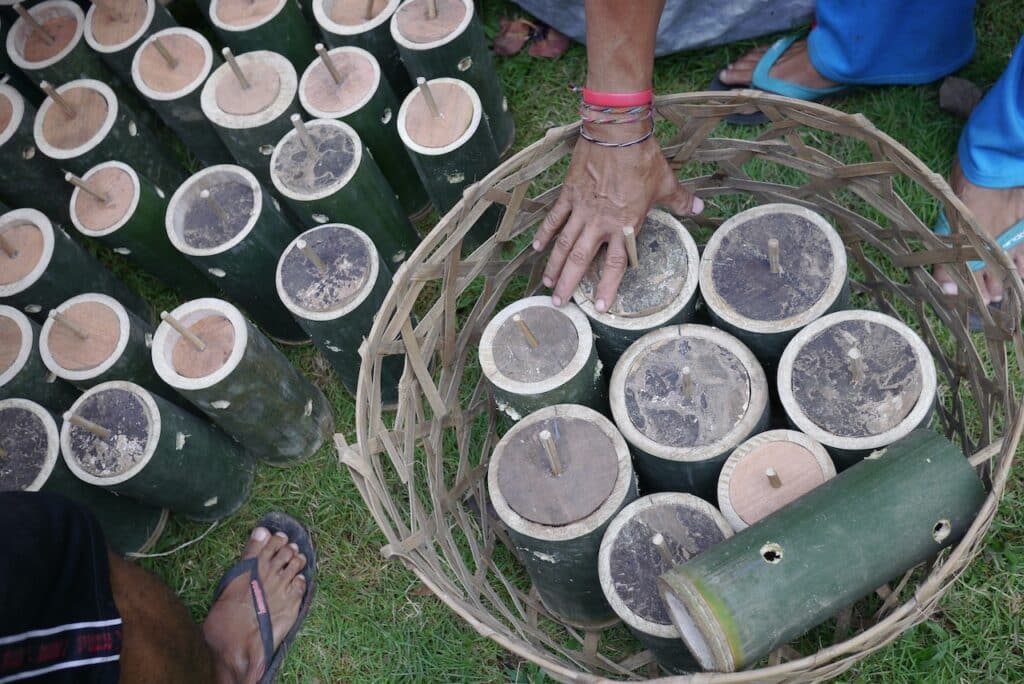
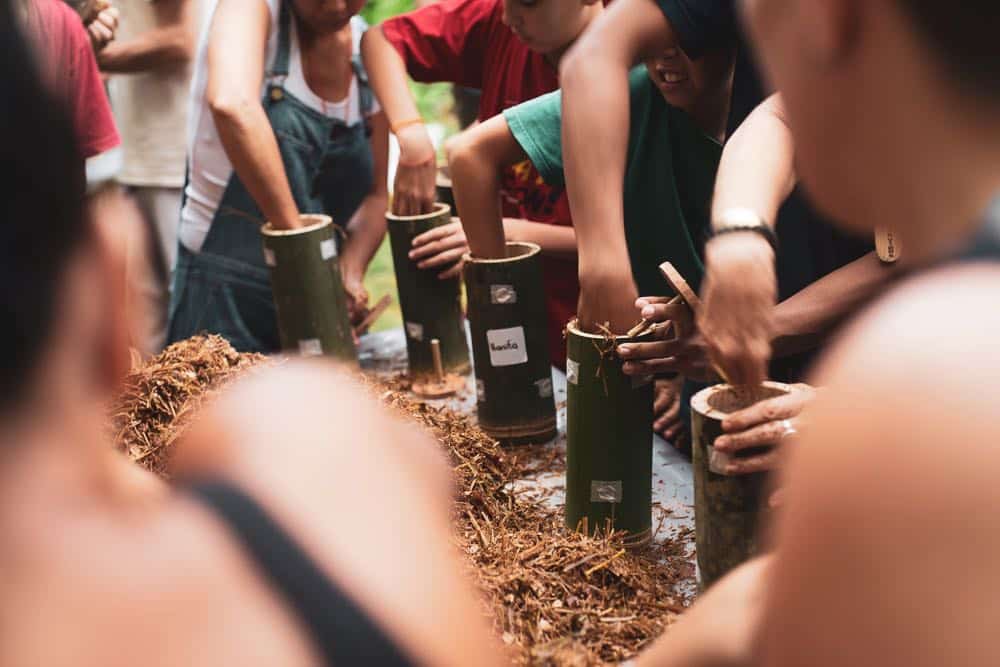
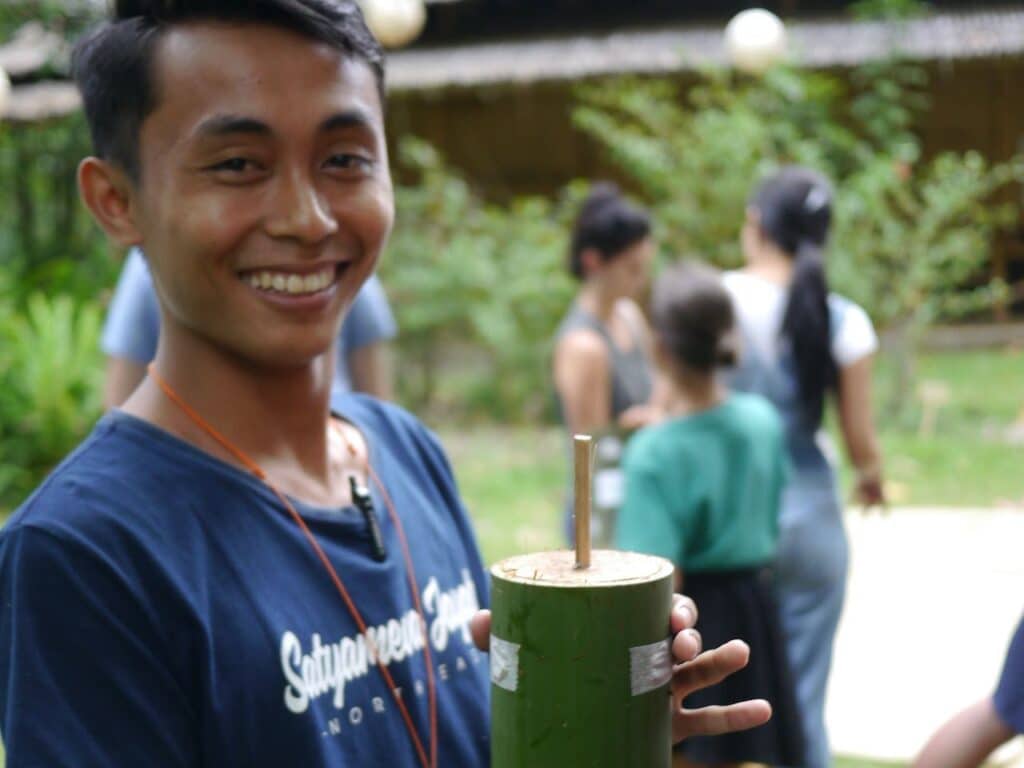
It’s always so great to see folks leaving a workshop, happy with their container of future mushrooms, and heading home with the hands-on skills to grow more! We love it.
We left Kul Kul Farm a few days later and headed home, while the mushrooms incubated in their little bamboo containers, at many homes nearby… for about two weeks, before they fruited.
And then, Maria sent us these awesome photos of the results. Thanks lovely! And I heard they were delicious, too.
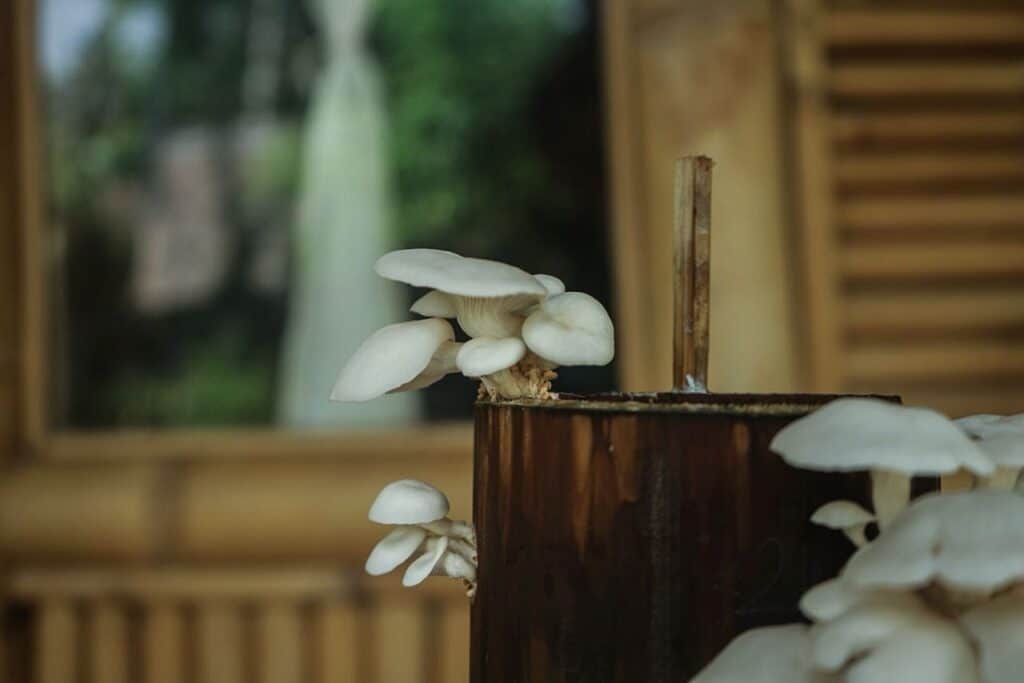


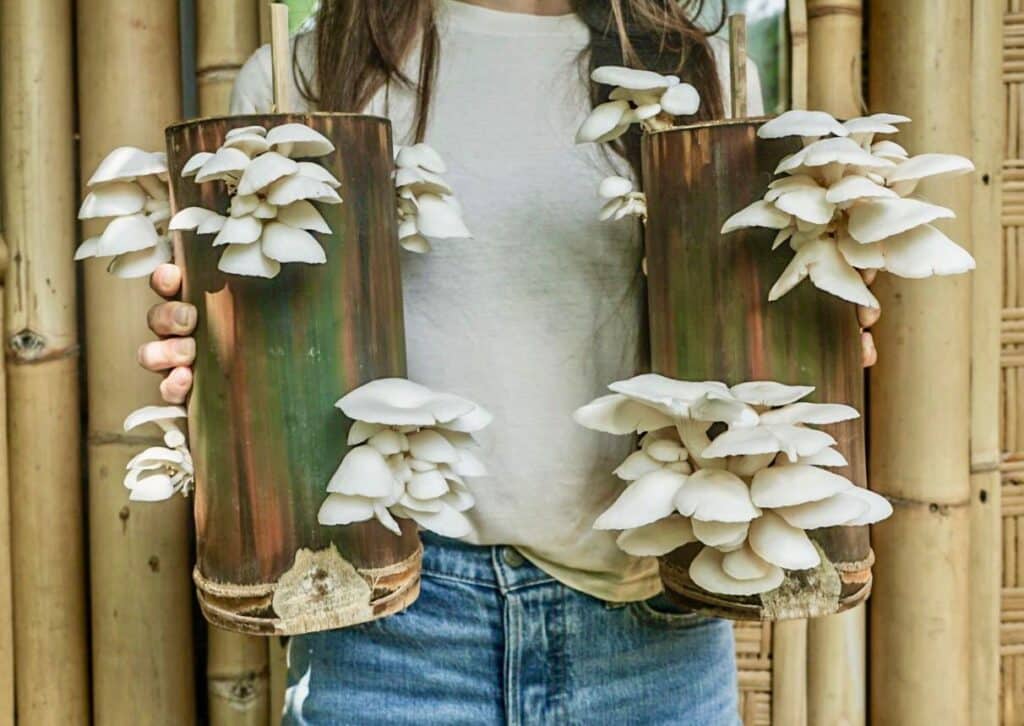
So there you go. Start where you are, use what you have, do what you can – the bamboo mushroom version (w thanks to Arthur Ashe)…
Here’s some more mushroom growing resources for you –
- All our free mushroom growing resources (videos, guides, how-tos and more)
- Here’s our free Intro to Mushrooms online course
- Here’s a few of the Nakivale mushroom projects (plz support!) – here, here and here.
- And here’s our Home Mushroom Cultivation online course, which welcomes students from all over the world, and together we grow a LOT of mushrooms.
And a note that, for all our courses, if you need a hand in order to make the learning happen – head to our Fair Share program to apply for a discount or scholarship. We got you, no matter where you’re at.
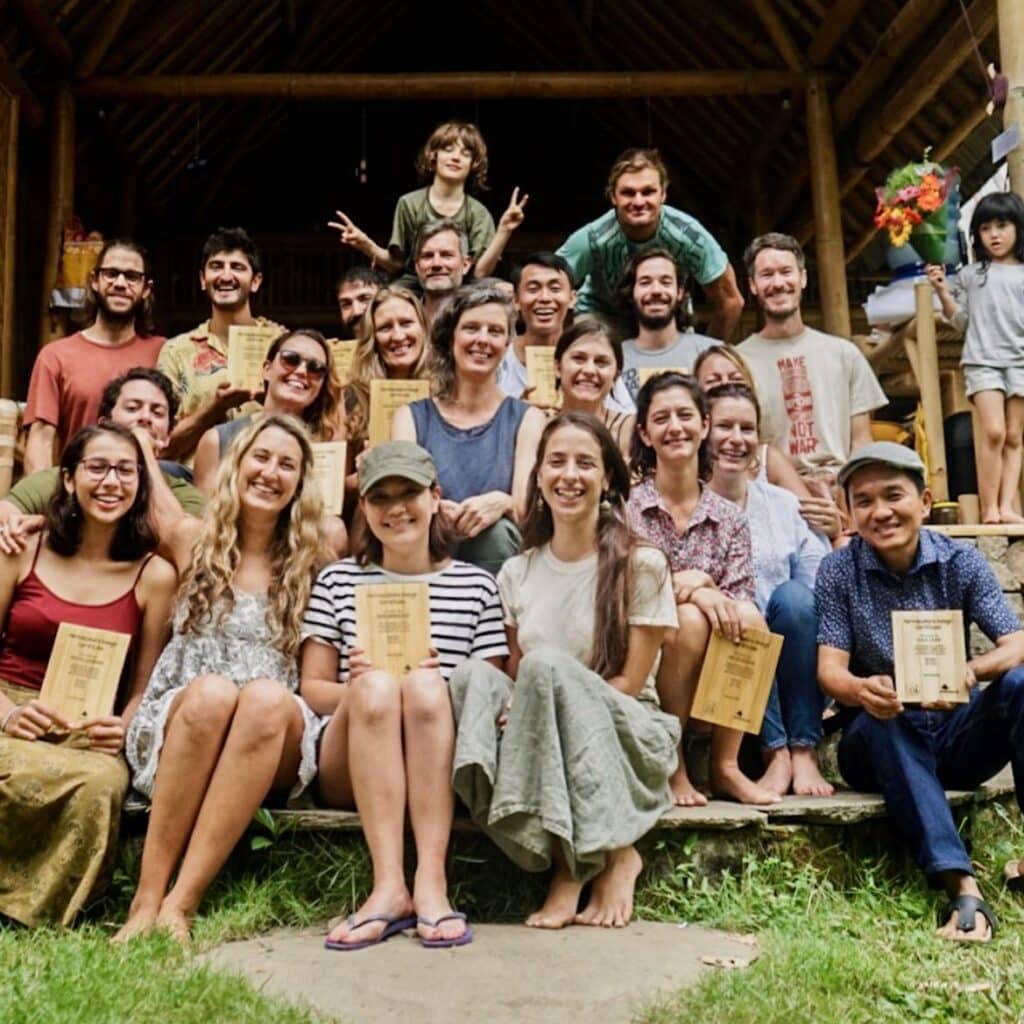
Big thanks to Maria & Orin Hardy (who are now focussing on BamboouBali– which has a resource-rich website here), and all the students and local folks who came along to the mushroom workshop – grow well, lovelies!
Various pics above taken by us, Maria Hardy, and Sash Milne – thanks, lovely humans.
Got any questions or wondering? Add them below in the comments, we’re happy to help x
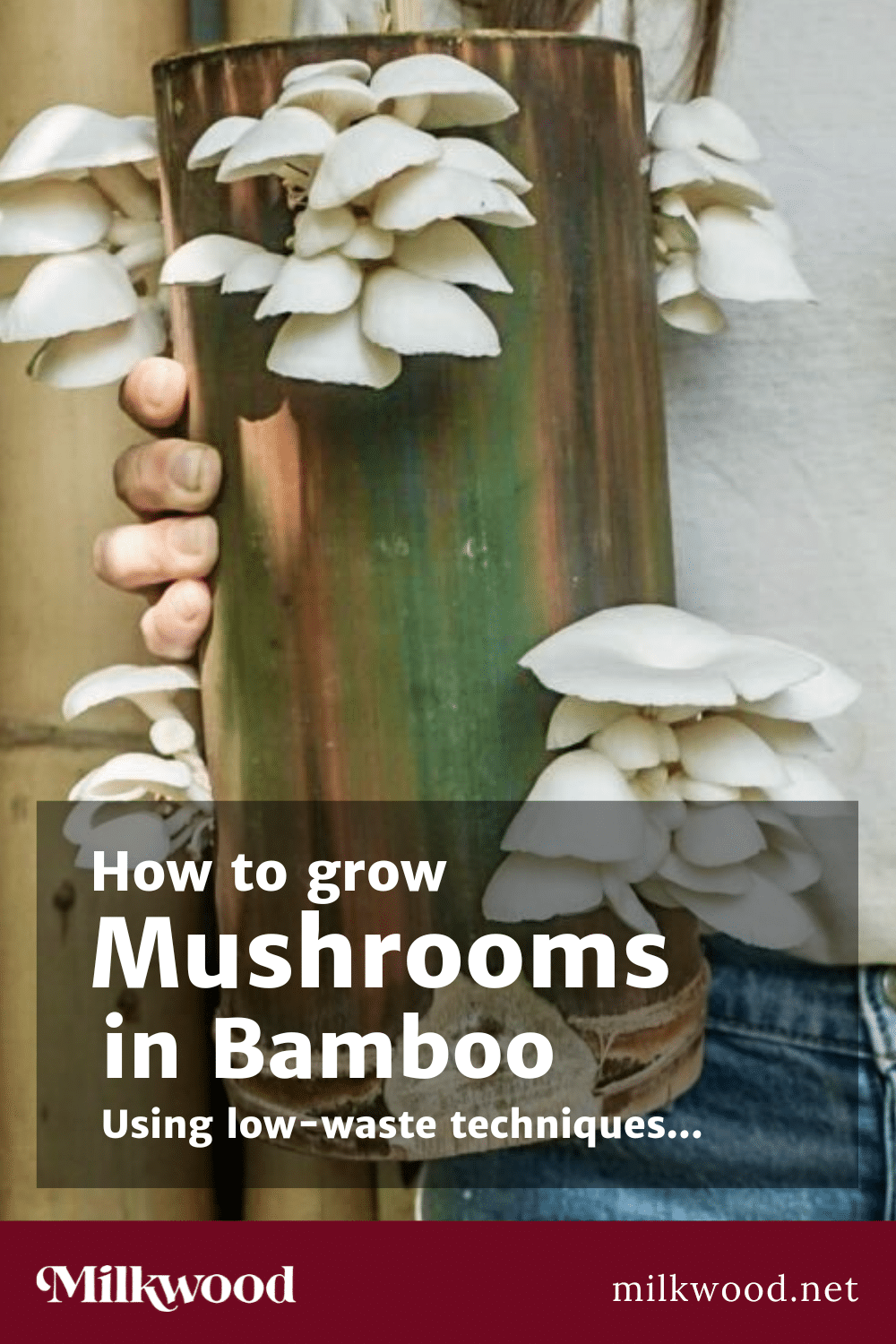

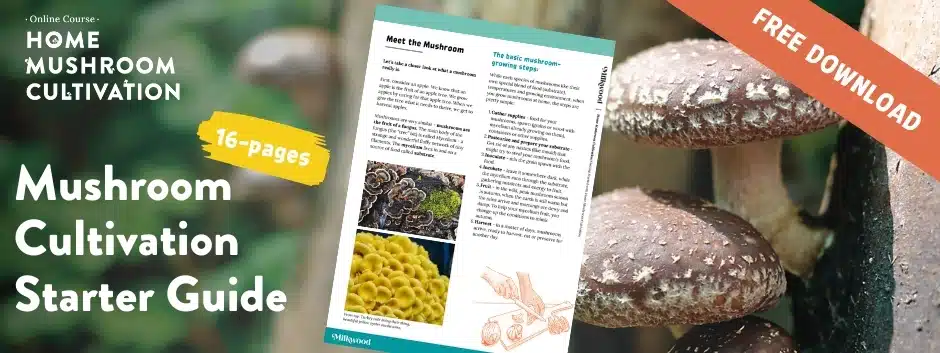
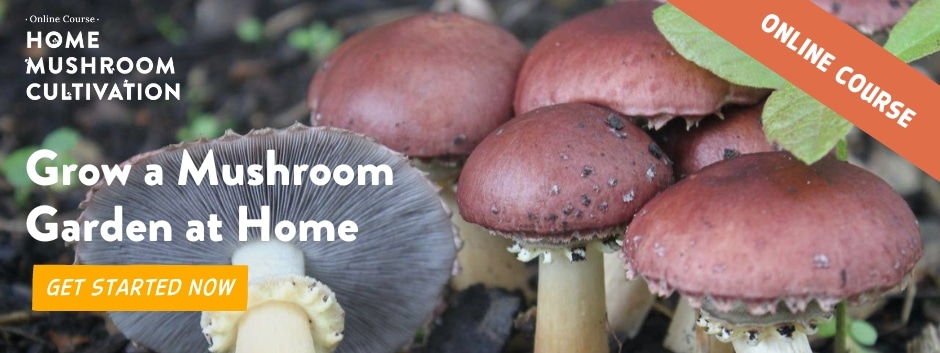
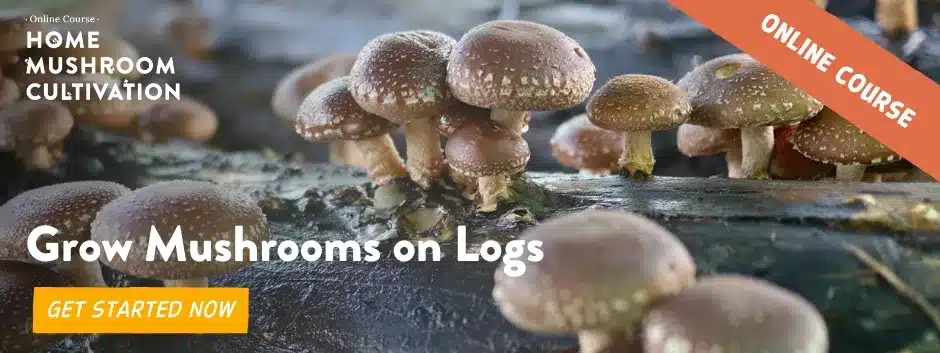
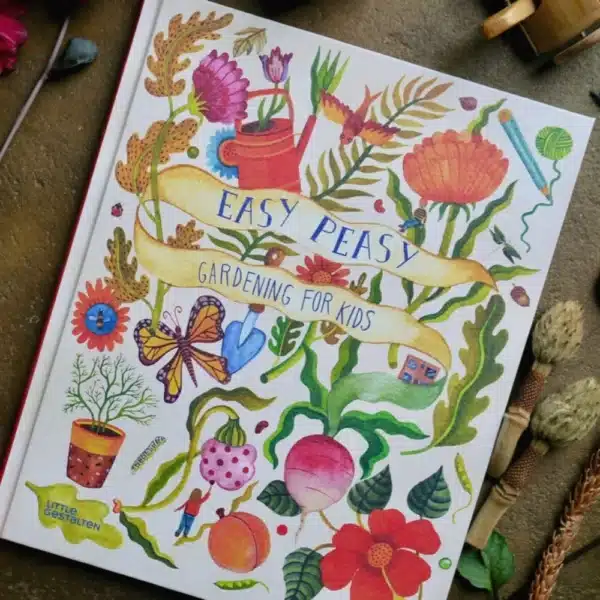
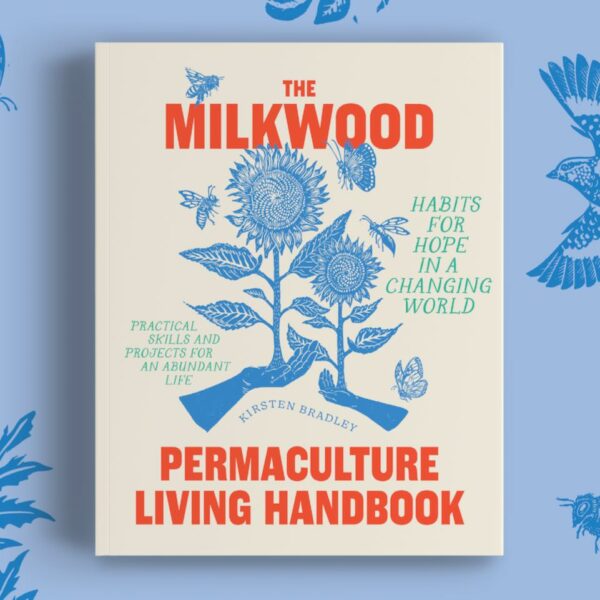







IF the fungi does start to break down the plastic, it will metabolise it into simpler compounds. The breakdown process is complex and doesn’t necessarily reduce plastics into just carbon and hydrogen… it may also result in intermediate compounds, which could include potentially harmful by-products depending on the type of plastic.
Hi Anthony, all good points. We re-worded the article so it was a bit clearer. Thanks for your input. Best Nick
This is such a great use of resources and so simple.
best of luck with it 🙂